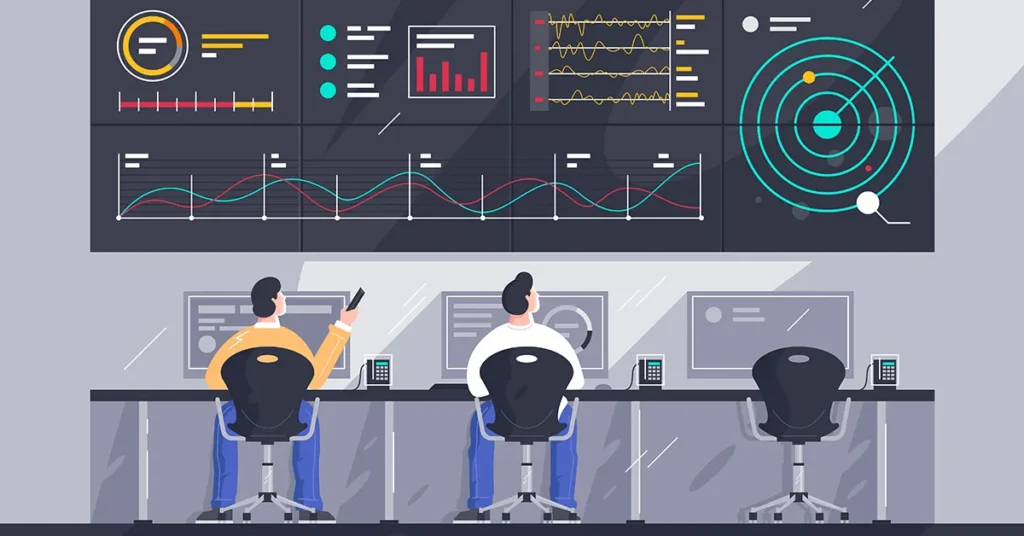
Starting a new role always brings a mix of excitement and nerves, but stepping into Support Duty felt like diving right into the deep end.
Think of us as the first responders in the world of tech — always ready to tackle issues before they escalate.
My first shift was a whirlwind of learning and adapting, but it taught me some valuable lessons that I’ll carry with me as I continue in this role.
1. What is Support Duty? 🚨
Support Duty is a specialized team of engineers who focus on monitoring and supporting a platform around the clock. We’re like the firefighters of tech: we’re always on the lookout for potential problems, ready to respond to emergencies, and working to prevent any issues from affecting the platform.
Our main responsibilities include:
- Monitoring & Maintaining Platform Health: Ensure the platform runs smoothly and proactively address potential issues before they escalate.
- Incident Response & Support: Quickly respond to customer emergencies and provide support during critical events like sales or launches.
- Effective Communication & Continuous Improvement: Communicate updates clearly with internal teams and external customers, while providing feedback to enhance platform reliability.
In essence, our job is to keep the platform running smoothly and ensure that any issues are addressed quickly, so customers don’t even notice.
2. What I Did in My First Shift 💼
In my first shift, I had the chance to dive right into the heart of the Support Duty role. Here’s what I focused on:
Payment Knowledge:
As a technical support engineer focused on ECOM payments, I had a lot to learn in terms of handling incidents related to POS transactions and the financial side of the service. There were moments when it felt like a lot to take in, but gradually, things started to make more sense.
Tooling:
I was already familiar with some tools like Salesforce and ElasticSearch, but my first shift required me to learn to use other tools like Grafana, YouTrack, PagerDuty, and GitLab. Each tool had its purpose, and I spent a lot of time getting comfortable with them to ensure I could respond quickly when an issue popped up.
People:
One of the most interesting aspects was getting to know my global team. Everyone has a specific area of expertise, and it was really helpful to understand who to reach out to for different types of issues. Building these connections made communication much smoother and more efficient.
3. What I Learned in My First Shift 🎓
The first shift taught me a lot — both in terms of technical skills and soft skills. Here are the key lessons I learned:
Communication & Collaboration
- Internal Communication: I quickly learned that you’re not expected to know everything right away. What matters is knowing who to ask and what questions to ask. Clear communication is essential, and you can’t over-communicate when it comes to incidents. Keeping everyone updated helps resolve issues faster.
- External Communication: When talking to external parties like merchants, on the other hand, it’s important to manage the information you share. You don’t want to overwhelm them with technical details or too much information, but you also need to keep them informed about the situation.
- Expectation Management: One thing I didn’t expect was how important it is to educate merchants on how to use emergency emails. It’s a simple tool, but it helps manage expectations and keeps everyone on the same page during high-stress situations.
Incident Management & Resolution
- Incident Analysis: I quickly learned that identifying patterns in incidents is like killing two (or more) birds with one stone. By finding connections, I can solve the current issue and prevent future ones, all while guiding the response more effectively.
- Proactivity: Before my shift began, I made it a point to show up a few minutes early to receive a handover from the previous team. This ensured I was up to speed and didn’t miss anything important. Taking this proactive approach helped the shift transition smoothly and allowed me to stay ahead of potential issues.
- Error Identification: One of the most important skills I learned was identifying false positives (non-issues) and false negatives (missed problems). Knowing how to distinguish between these can save time and prevent unnecessary work.
- Handling Error Codes: There are internal error codes (visible only to the team) and external error codes (seen by customers). Understanding the difference is key when diagnosing issues and communicating effectively with the right teams.
Processes & Tools
- Handover Notes: One thing I learned is that clear handover notes are essential for a smooth shift change. If the information isn’t formatted well or is missing key details, it can lead to confusion or mistakes. A well-written handover helps the next team pick up right where the previous one left off.
- Log Searching: In my first shift, I had to get up to speed with log searches. Understanding the integration types and knowing what to look for in logs based on those types made it easier to find the root cause of incidents.
- System Architecture: I also had to familiarize myself with the system architecture, such as which teams manage which services. Knowing who owns what component of the platform helps with quick and effective escalation.
As I look back on my first shift, it’s clear that the role of Support Duty is all about balance — balancing speed with accuracy, communication with action, and always staying one step ahead.
It’s a fast-paced, ever-evolving job, and while there’s still a lot for me to learn, I’m excited to keep building my skills and making a meaningful impact.
Each shift brings new challenges, but with the lessons I’ve already learned, I’m ready to face them head-on.
Onward and upward! 🚀